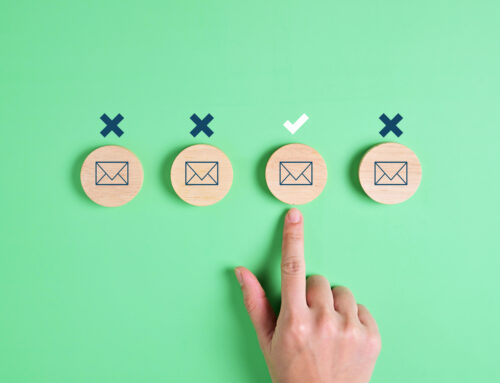No, you shouldn’t.
OK, nice chatting with you. Have a great day!
In all seriousness, this question came up in a nonprofit communications Facebook Group and I was amazed how many people told the poster to contact unsubscribers to see why they left.
This is a bad idea possibly violating various laws depending on what country they are in. Plus add in everything going on right now and you have a recipe for disaster.
Can you imagine asking someone why they unsubscribed from your email list and they’re like, “Uhhh my husband is in the hospital with COVID and I’m trying to hold down two jobs to put food on the table while homeschooling my kid, etc, etc.” You will never get another cent, social media share, or volunteer hour from this person again.
But all is not lost.
You just need to have systems in place BEFORE AND IMMEDIATELY AFTER someone hits the unsubscribe button.
1. Better Opt Out Pages
You need to have a way to customize your opt out page so people can either:
- Stay on your list, but only get the types of emails they want from you (No more newsletters, but please tell me about special events, etc)
- Tell you why they opted out (This also gives you the chance to get them back with the more customized opt out.)
We talk more about opt out pages in these blog posts:
- You Need to Fix Your All or Nothing Email List
- 3 Nonprofit Email Unsubscribe Pages That Might Inspire You
- Best Practices for Your Email Unsubscribe Page
2. Run Re-Engagement Campaigns
Often someone unsubscribes after not being engaged (opening or clicking your emails) for some time. I talked about how Google prompts their users to unsubscribe in Need Proof That Inbox Providers Are Checking on Engagement?
The best thing you can do is try to get them opening and clicking on those emails BEFORE Google or Microsoft or Yahoo notices by running a re-engagement campaign.
These campaigns can be a simple “Hey, do you still want to get our emails?” or you can try to entice them back with your most popular content or a special offer.
We have talked a lot about re-engagement campaigns too:
- Why Deleting People from Your Email List is a Good Thing
- We Are Running an Email Re-Engagement Campaign and People Have Feelings
- Worry Less About Spam Blocking and More About Email Engagement, Part 1
- Worry Less About Spam Blocking and More About Email Engagement, Part 2
- When to Stop Snail Mailing and Emailing People, Part I
- Clean Up Your Email List and Improve Your Online Fundraising Results
Add these two strategies to your email marketing and you will not only have a healthier email list, but a better understanding of why people left.






